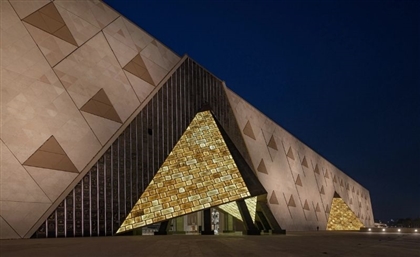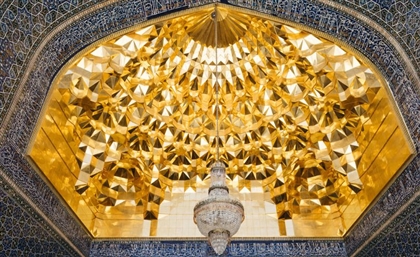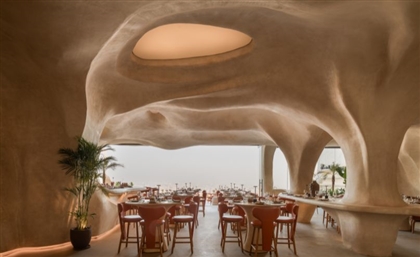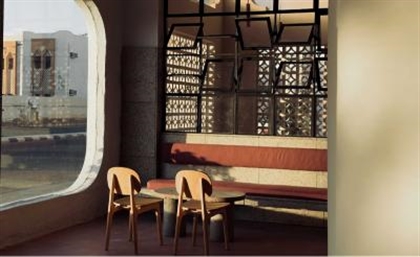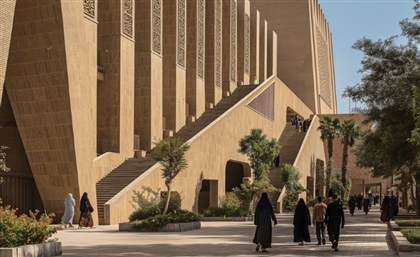Unreal Homes From We Are Desco’s Metaverse Architecture Competition
You’re greeted by ant avatars, navigate cosmic concepts and practice in a judo dojo covered in space grey architecture
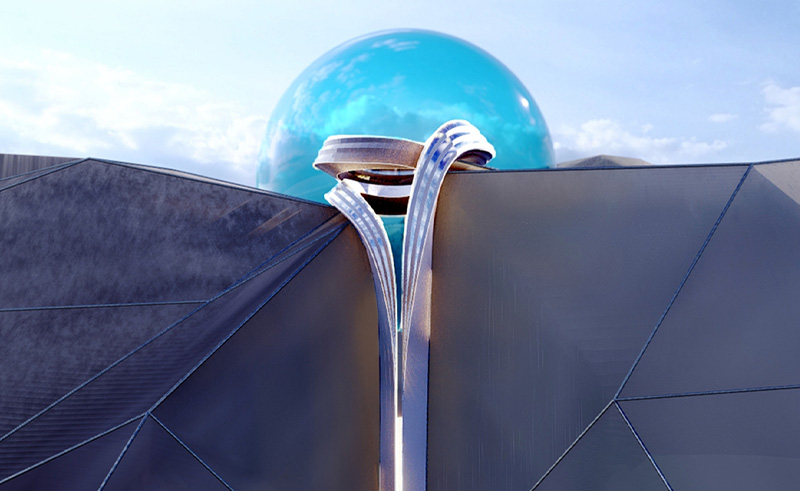
Regardless of how you feel about the metaverse, you’ve probably imagined what it would look like. If you thought homes would be made of cheese or informed by lava with shapeshifting forms and mood-dictated colours then you’re spot on. As seen in the architectural designers community, We Are Desco’s first architecture competition, things can get unreal in the absence of physical norms.
1st Place: Beyond the Gates of Reality by Nour El Koussy, Nour Khaled, Omar Salama
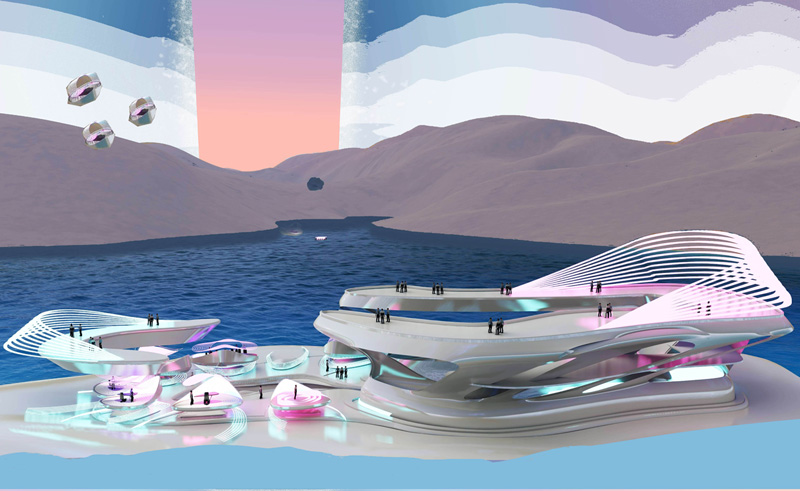 Like real-world architecture competitions, this one placed a lot of emphasis on the brief. This first prize winner didn’t stop at the personal, collaborative and exhibition spaces, but also added an isolated space in a design that features an array of pods set across multiple levels and connected through the main hub. Your choice of pods depends on whether you are flying ‘solo’, having a ‘one on one’ meeting or getting together with the entire ‘squad’.
Like real-world architecture competitions, this one placed a lot of emphasis on the brief. This first prize winner didn’t stop at the personal, collaborative and exhibition spaces, but also added an isolated space in a design that features an array of pods set across multiple levels and connected through the main hub. Your choice of pods depends on whether you are flying ‘solo’, having a ‘one on one’ meeting or getting together with the entire ‘squad’.
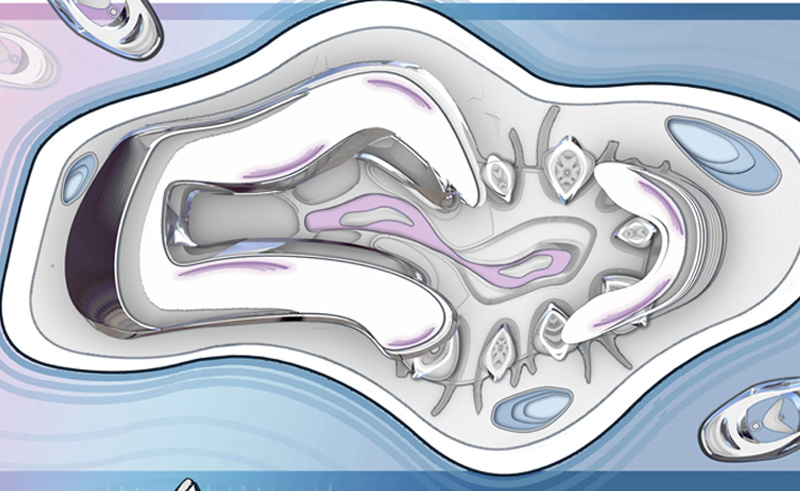 “The metaverse allows us to experience so much without physically having to go anywhere and that’s literally a dream come true for everyone working in a creative field like ours,” the architects behind the design tell NFTYScene. “Architects tend to have the widest imagination to absorb different styles, but disciplines can only grow as much as their environments allow them. Now, imagine what happens when there is no surrounding environment.”
“The metaverse allows us to experience so much without physically having to go anywhere and that’s literally a dream come true for everyone working in a creative field like ours,” the architects behind the design tell NFTYScene. “Architects tend to have the widest imagination to absorb different styles, but disciplines can only grow as much as their environments allow them. Now, imagine what happens when there is no surrounding environment.”
2nd Place: Nova: The Perfect Explosion by Reem Shahin
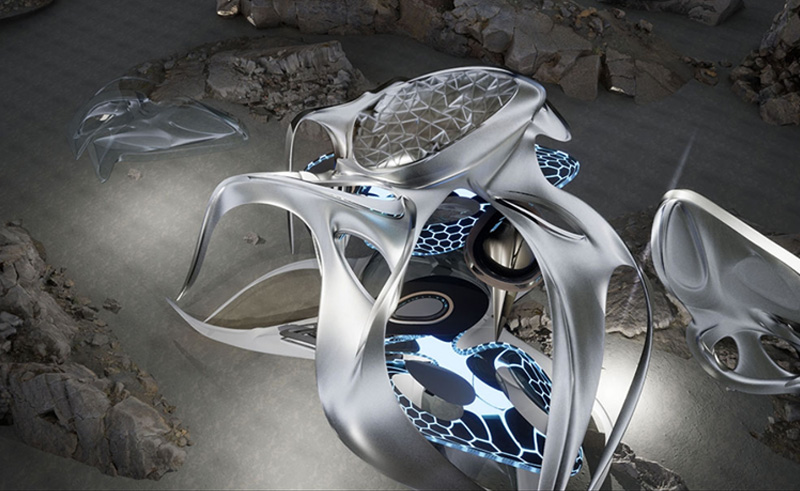 Houston, we’ve come across a cosmic concept. Inspired by the phenomenon of neutron star collisions and their subsequent powerful explosions, the designer imagined fluid forms which resulted in floating spaces. One of the outcomes of her energetic shapes was a large collaboration space tucked underneath a unique steel design, as a metallic theme covers all virtual surfaces.
Houston, we’ve come across a cosmic concept. Inspired by the phenomenon of neutron star collisions and their subsequent powerful explosions, the designer imagined fluid forms which resulted in floating spaces. One of the outcomes of her energetic shapes was a large collaboration space tucked underneath a unique steel design, as a metallic theme covers all virtual surfaces.
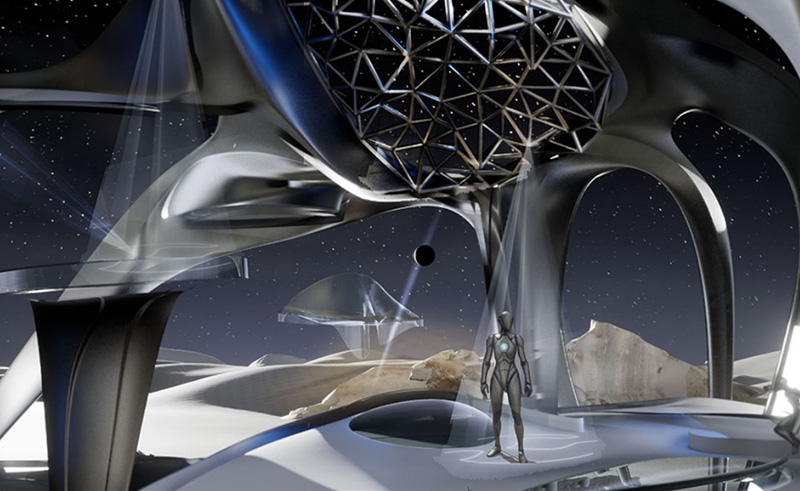 “Nova is a metaverse home that offers a glimpse into living and collaborating in a space hub. It utilises the concept of magnetic explosions which release energy from hyper-massive neutron stars,” Shahin says. “At its heart is a double-layered glass skin that forms spheres of personal spaces.”
“Nova is a metaverse home that offers a glimpse into living and collaborating in a space hub. It utilises the concept of magnetic explosions which release energy from hyper-massive neutron stars,” Shahin says. “At its heart is a double-layered glass skin that forms spheres of personal spaces.”
Dual 3rd Place: Meta-Loop by Mohamed El-Araby
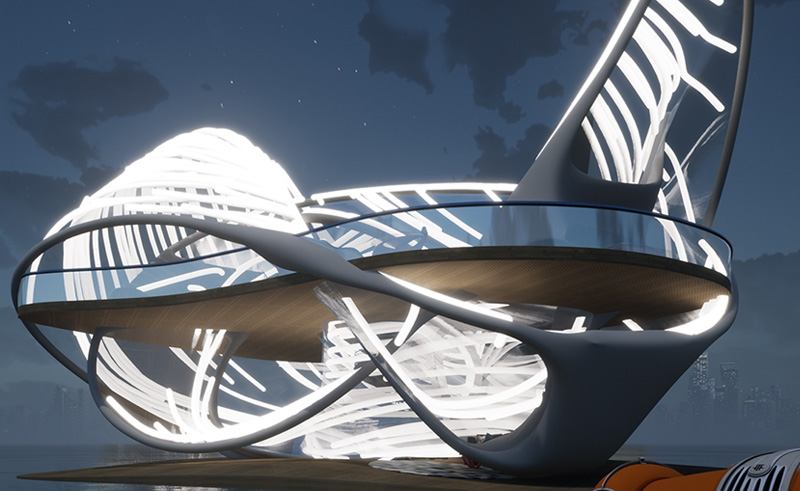 While many are intrigued by the unlimited nature of the digital world, El-Araby found in it the biggest challenge. He opted to look at a principle of maths, because maths are cool. Meta-loop features repetitive elements derived from ‘recursion’ throughout its spaces. Alongside it is a ‘loop’ effect inspired by the Mobius Strip which features a twisting surface with attached ends.
While many are intrigued by the unlimited nature of the digital world, El-Araby found in it the biggest challenge. He opted to look at a principle of maths, because maths are cool. Meta-loop features repetitive elements derived from ‘recursion’ throughout its spaces. Alongside it is a ‘loop’ effect inspired by the Mobius Strip which features a twisting surface with attached ends.
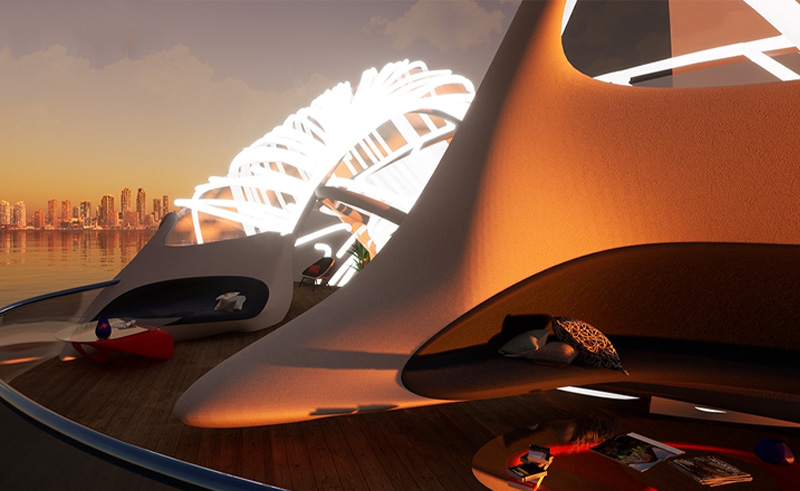 “It gives the space a sense of ambiguity to encourage exploration,” he says, pointing at the loop. “Additionally, as it touches the ground it serves as partitions, guides and furniture.” The form was created using a ‘looping script’ which generated random points onto which the design was formed.
“It gives the space a sense of ambiguity to encourage exploration,” he says, pointing at the loop. “Additionally, as it touches the ground it serves as partitions, guides and furniture.” The form was created using a ‘looping script’ which generated random points onto which the design was formed.
Dual 3rd Place: Luj’s by Logine Sameh
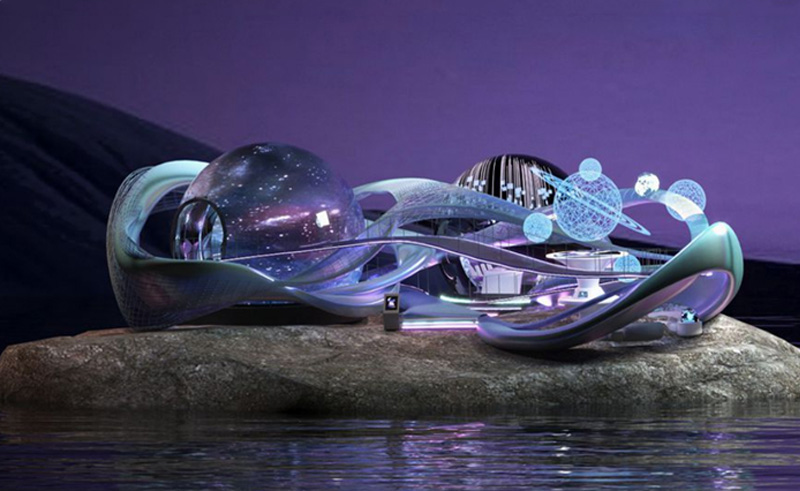 As far as everyone is concerned, both the metaverse and space represent the vast unknown, and where else do you go to chase after the excitement of the final frontier? Sameh’s space in the metaverse originates from a fascination with astronomical principles.
As far as everyone is concerned, both the metaverse and space represent the vast unknown, and where else do you go to chase after the excitement of the final frontier? Sameh’s space in the metaverse originates from a fascination with astronomical principles.
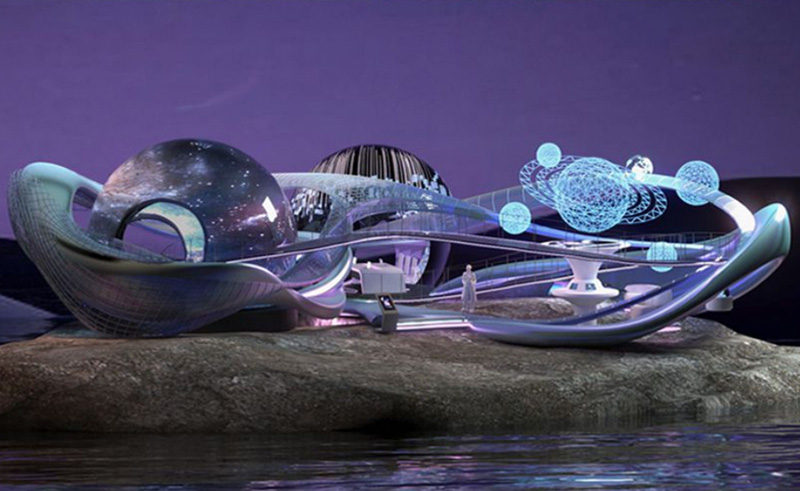 “The design invokes the experience of orbital motion of the solar system. It involves intricate choreography created by the unique gravitational attraction that is translated in the lines, circulation and the round walls. These elements create a dynamic vibe and allow my visitors to get the full outer space experience.”
“The design invokes the experience of orbital motion of the solar system. It involves intricate choreography created by the unique gravitational attraction that is translated in the lines, circulation and the round walls. These elements create a dynamic vibe and allow my visitors to get the full outer space experience.”
Honourable Mentions
Curla by Karim Enany and Ziad El Mahdy
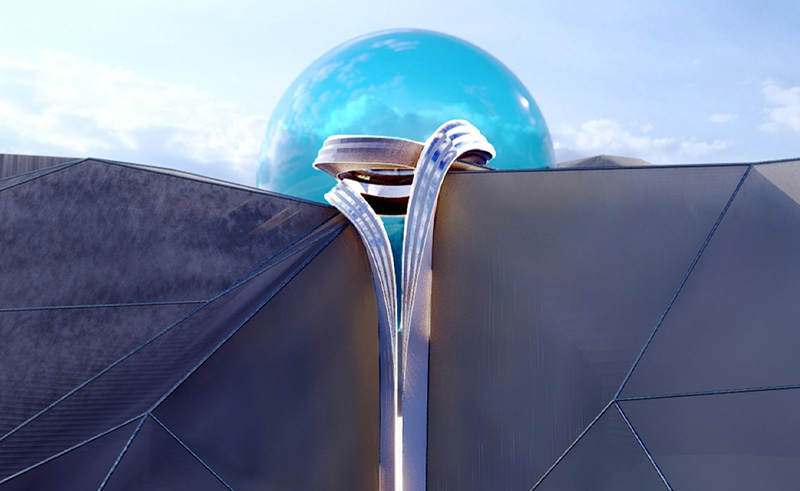 Dubbed ‘The Most Extravagant Anti-Scraper’, this project is meant to feature technology that allows it to read the users’ state of mind and then reflect it through a colour scheme derived from lava. Yes, lava. Specifically, those found at the Kawah Ijen Volcano in Indonesia.
Dubbed ‘The Most Extravagant Anti-Scraper’, this project is meant to feature technology that allows it to read the users’ state of mind and then reflect it through a colour scheme derived from lava. Yes, lava. Specifically, those found at the Kawah Ijen Volcano in Indonesia.
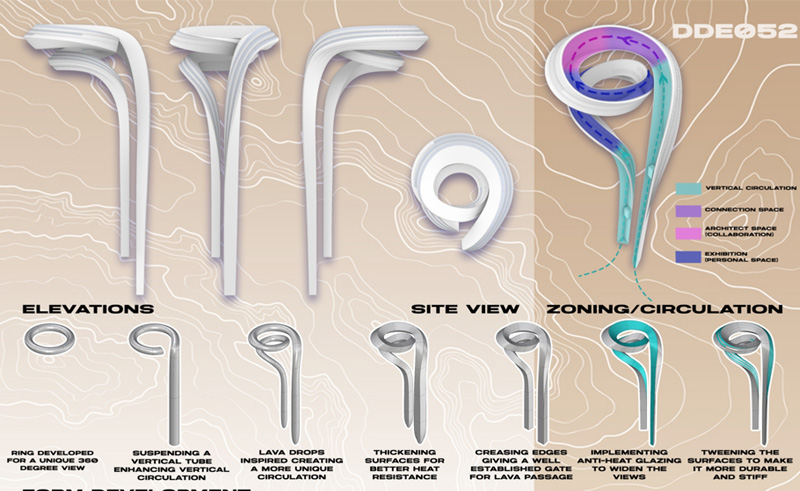 These colour coded emotions would be displayed on a smooth architectural body which spirals in shape. The project was broken down into three zones, with a material palette ranging from glossy polish, epoxy and rainbow obsidian. At some point in the future, it’s meant to also read the designer’s mind and display those creations instantly through a hologram.
These colour coded emotions would be displayed on a smooth architectural body which spirals in shape. The project was broken down into three zones, with a material palette ranging from glossy polish, epoxy and rainbow obsidian. At some point in the future, it’s meant to also read the designer’s mind and display those creations instantly through a hologram.
The Architects of Nature by Ashraqat Khalaf and Abeer Ramadan
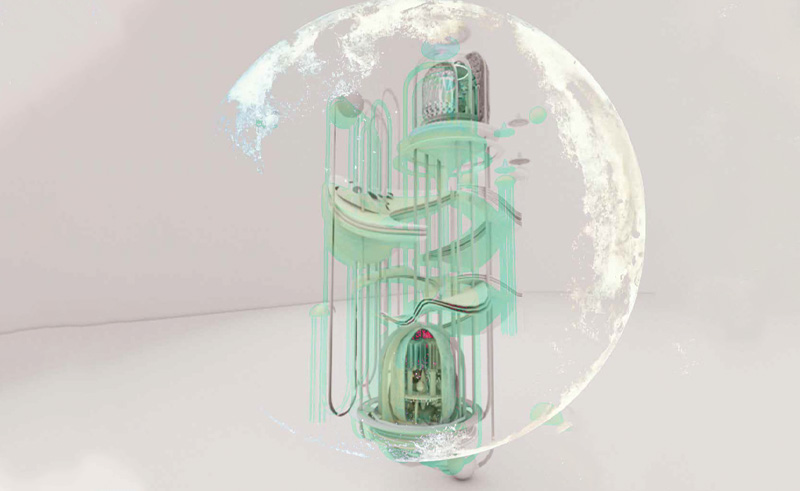 Nature-inspired designs can prove to be quite popular in the digital world by providing familiar environments. This project highlights design in the natural world by drawing inspiration from multiple living organisms. Entering the house, you would find bee avatars taking you to the collaboration space and then the connection space, where ants worked to create those joints. Pufferfish would then lead you on to the personal space.
Nature-inspired designs can prove to be quite popular in the digital world by providing familiar environments. This project highlights design in the natural world by drawing inspiration from multiple living organisms. Entering the house, you would find bee avatars taking you to the collaboration space and then the connection space, where ants worked to create those joints. Pufferfish would then lead you on to the personal space.
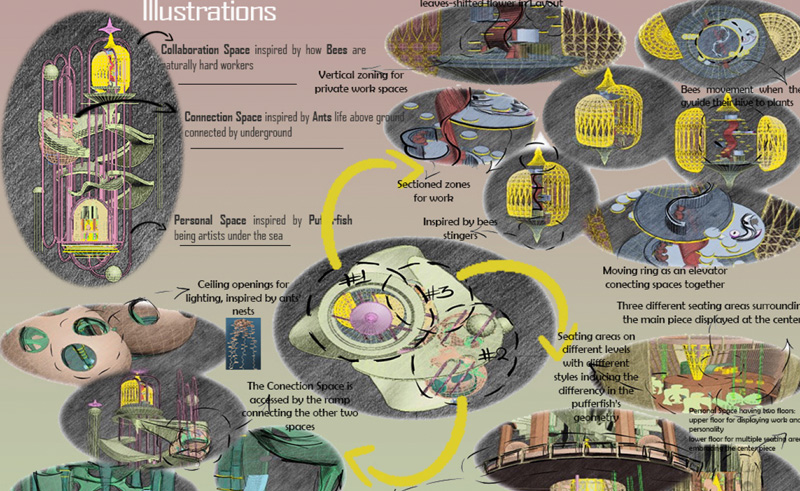 “Architects are always surrounded by inspiration and it can have multiple outcomes depending on the architect and the environment,” the designers say. “For example, look at how plants and flowers provide inspiration to pufferfish, who use it to build a flower-shaped structure to find their significant other and protect their eggs. As for the underground architects, ants balance ecosystems by protecting plants, and bees are the environmental architects of nature.”
“Architects are always surrounded by inspiration and it can have multiple outcomes depending on the architect and the environment,” the designers say. “For example, look at how plants and flowers provide inspiration to pufferfish, who use it to build a flower-shaped structure to find their significant other and protect their eggs. As for the underground architects, ants balance ecosystems by protecting plants, and bees are the environmental architects of nature.”
Metaloop by Mazen Ahmed and Mahmoud Reda
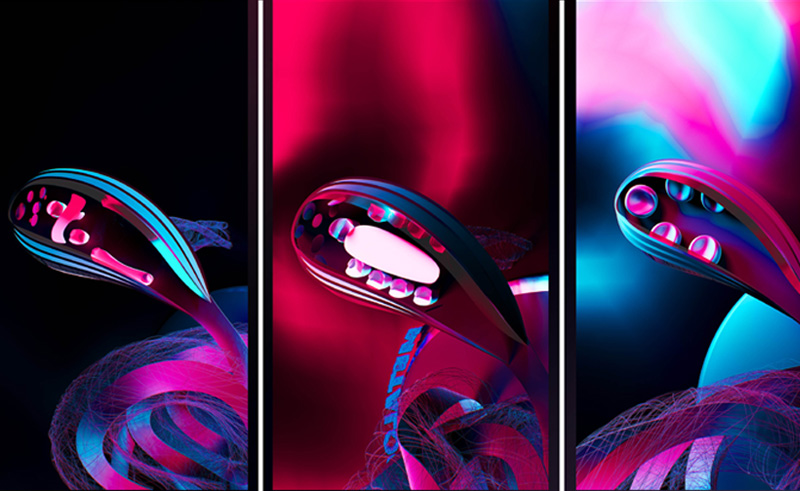 Metaloop drenches biomimicry in purple haze, with different rooms situated in petals while movement through the spaces. Lighting strips run throughout the spaces with a colour scheme of cyan and magenta in a contrasting spectacle. Meanwhile, furniture (yes, it may come as a surprise but furniture is useful in the metaverse) have smooth organic shapes.
Metaloop drenches biomimicry in purple haze, with different rooms situated in petals while movement through the spaces. Lighting strips run throughout the spaces with a colour scheme of cyan and magenta in a contrasting spectacle. Meanwhile, furniture (yes, it may come as a surprise but furniture is useful in the metaverse) have smooth organic shapes.
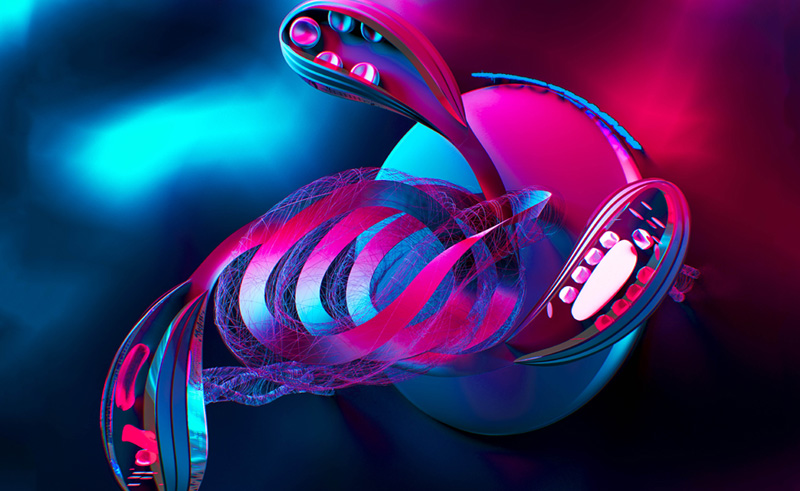 “Our spaces are designed to be different from the real world because the metaverse promises experiences which aren’t possible in real life. We created a smooth, open space with portals that you can use to teleport to any space, and lots of holograms to integrate digital life with our setting,” the designer explain their process.
“Our spaces are designed to be different from the real world because the metaverse promises experiences which aren’t possible in real life. We created a smooth, open space with portals that you can use to teleport to any space, and lots of holograms to integrate digital life with our setting,” the designer explain their process.
District by Sara Ashraf
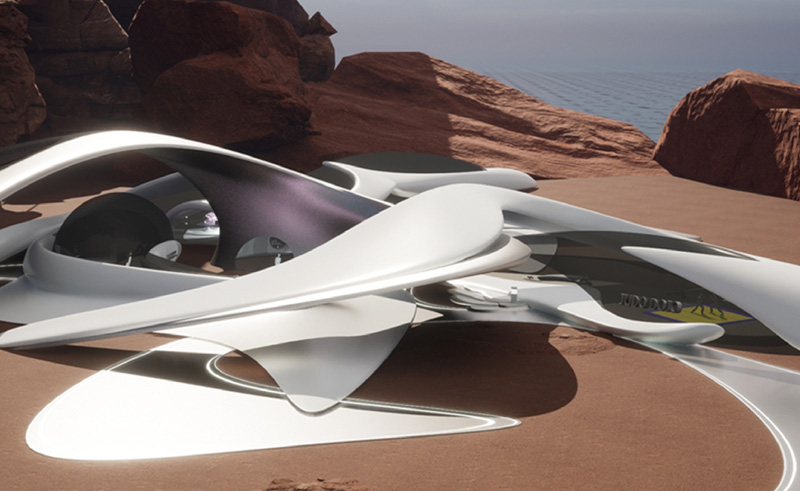 In an imaginary scenario, Ashraf recalls how Mars came the closest to earth it ever did to Earth, which directly inspired the creation of this ‘district’. To her, it’s where Earth meets Mars. The architecture is smooth with curves covered in shell white and space grey and the furniture designs follow suit.
In an imaginary scenario, Ashraf recalls how Mars came the closest to earth it ever did to Earth, which directly inspired the creation of this ‘district’. To her, it’s where Earth meets Mars. The architecture is smooth with curves covered in shell white and space grey and the furniture designs follow suit.
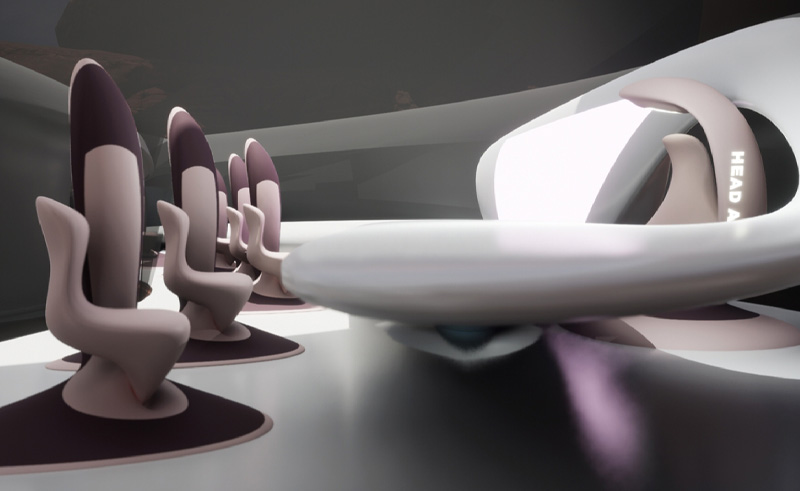 The ‘district’ is divided into three spaces, a ‘meta-workspace’, a ‘meta-archs meeting room’ and a Judo dojo. We can’t emphasise enough the importance of practising judo in the metaverse. “Each space is taking a fluid and dynamic form, wrapping the central space which controls the rest. A net is generated to set the district’s boundaries,” the designer describes her project.
The ‘district’ is divided into three spaces, a ‘meta-workspace’, a ‘meta-archs meeting room’ and a Judo dojo. We can’t emphasise enough the importance of practising judo in the metaverse. “Each space is taking a fluid and dynamic form, wrapping the central space which controls the rest. A net is generated to set the district’s boundaries,” the designer describes her project.
Remix Your Home by Athanasios Pappas
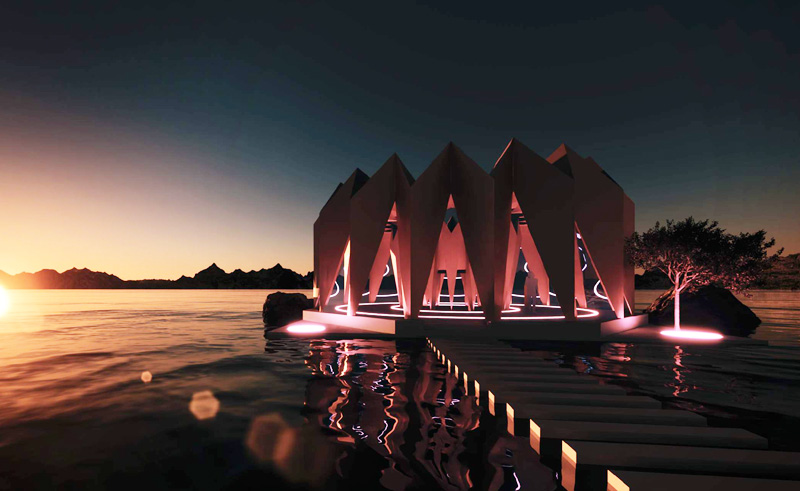 There are many examples of folding design in the real world, from origami to dynamic sun shades. Yet applying it in the digital world means endless tweaks and adaptations in real time. It would be as simple as clicking a button or moving a handle, or maybe, really, using a joystick. A circular plan allows the collaboration space to be situated at the heart of the project.'
There are many examples of folding design in the real world, from origami to dynamic sun shades. Yet applying it in the digital world means endless tweaks and adaptations in real time. It would be as simple as clicking a button or moving a handle, or maybe, really, using a joystick. A circular plan allows the collaboration space to be situated at the heart of the project.'
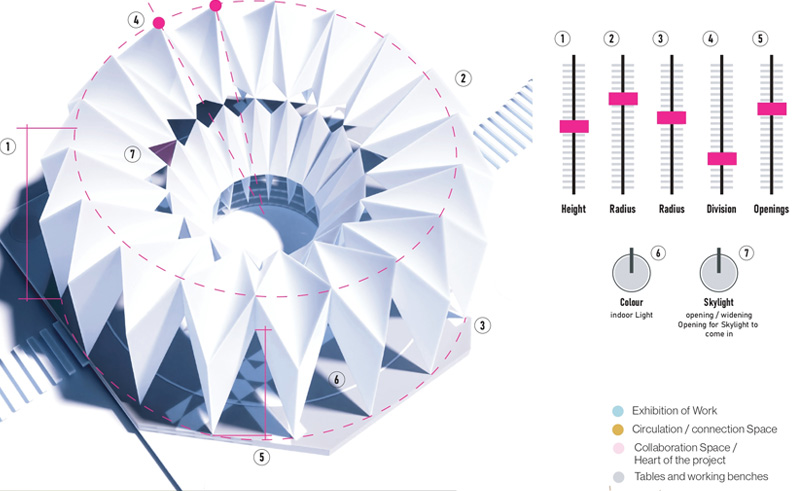 “There are no restrictions in the metaverse. Every room is interchangeable and can be whatever you need it to be at any given time. Here, every room takes shape and can be adjusted to serve different needs,” the designer says of the design which can be tailored to your needs. You could go for a high or a low ceiling, a bigger or smaller room, more lights, less lights. You can even change the colours, or have no colours at all! After all, this is unreal.
“There are no restrictions in the metaverse. Every room is interchangeable and can be whatever you need it to be at any given time. Here, every room takes shape and can be adjusted to serve different needs,” the designer says of the design which can be tailored to your needs. You could go for a high or a low ceiling, a bigger or smaller room, more lights, less lights. You can even change the colours, or have no colours at all! After all, this is unreal.
- Previous Article The Enduring Charm of Jeddah’s Old Town of Al Balad
- Next Article Egyptian Embassies Around the World
Trending This Month
-
Jan 10, 2026




